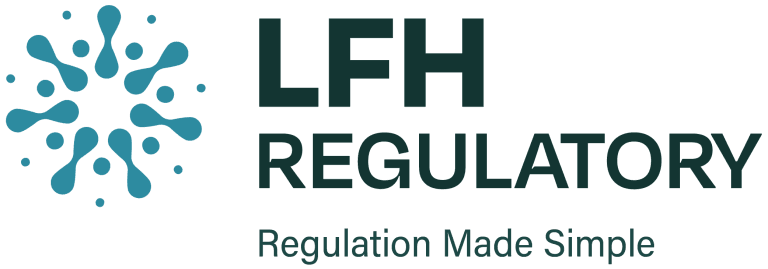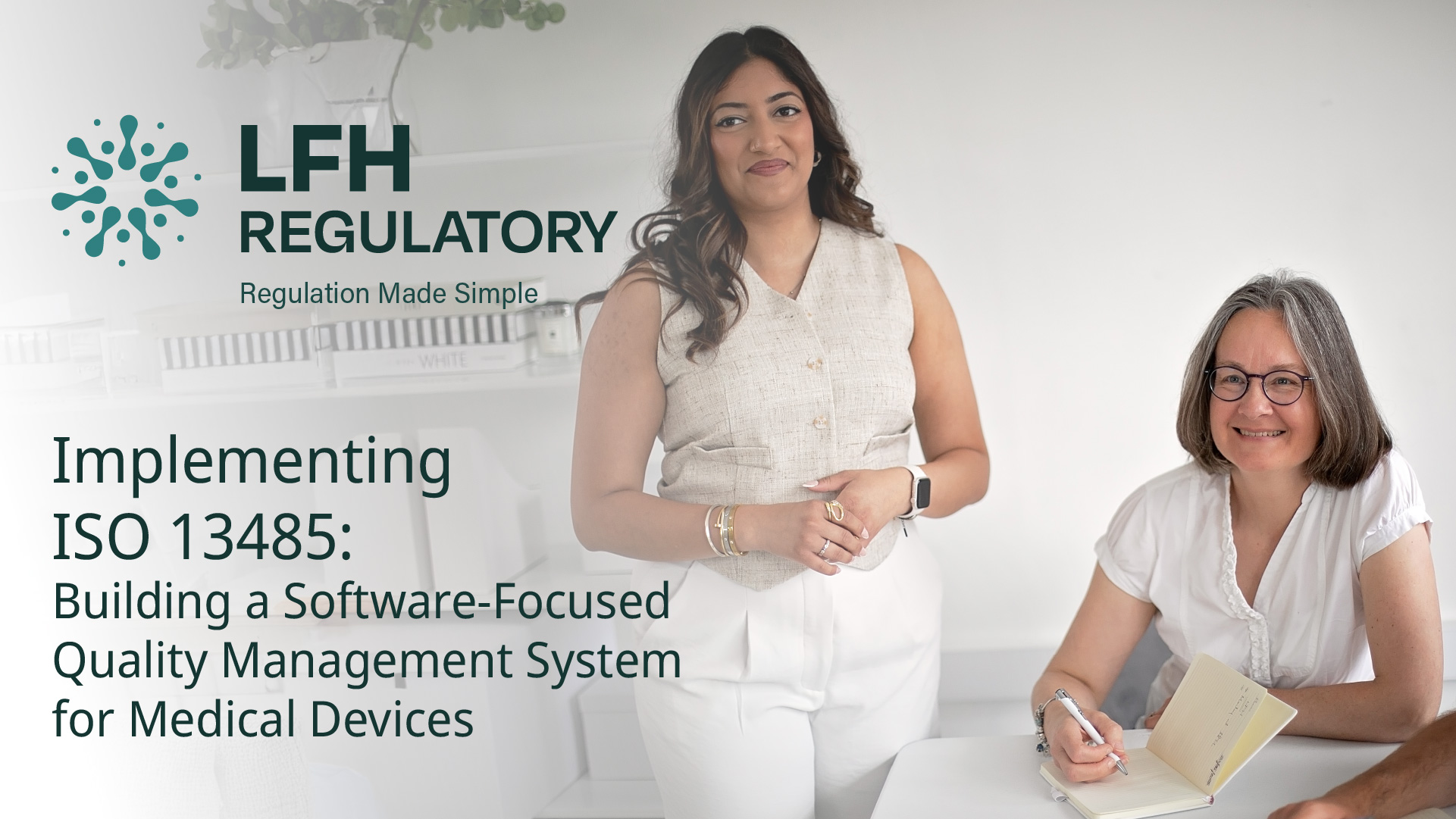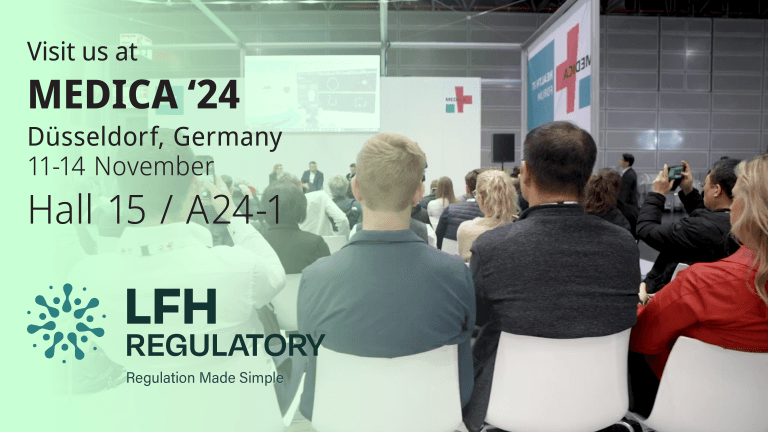Developing a medical-device software product demands more than technical innovation. It requires a robust, traceable, and auditable Quality Management System (QMS) that satisfies ISO 13485:2016.
This international standard defines the framework for designing, manufacturing, and maintaining safe and effective medical devices. For software developers, it bridges the gap between agile engineering and regulatory rigour, ensuring that design decisions, documentation, and testing align with patient safety and compliance expectations.
What ISO 13485 Means for Software Developers
ISO 13485 sets out how manufacturers and developers must plan, control, and verify every activity influencing device quality. Its principles apply equally to physical devices and software as a medical device (SaMD) or software used in device control.
A compliant QMS enables organisations to:
- Demonstrate consistent product quality and regulatory conformity.
- Maintain documented evidence for audits and notified-body reviews.
- Integrate continuous improvement across the product lifecycle.
Core QMS Documentation and Structure
A complete ISO 13485 system is underpinned by a Quality Manual, supporting Standard Operating Procedures (SOPs), and controlled forms and records.
Quality Manual (QM)
Defines the scope of the QMS, applicable exclusions, and the interaction between processes. It serves as the master reference linking each clause of the standard to its corresponding procedure.
Key SOPs
Each clause requires documented processes—for example:
- Document and Record Control (Clause 4.2) – ensures controlled document versioning and retention for the device lifetime.
- Change Control (Clauses 4 & 7) – manages updates to software, specifications, and records with traceable approvals.
- Management Review (Clause 5) – evaluates the QMS at planned intervals for suitability and effectiveness.
- Risk Management (Clause 7.1 + ISO 14971) – identifies, analyses, and mitigates risks during design and post-market phases.
- Software Design and Development (Clause 7.3) – documents planning, verification, validation, and transfer.
- CAPA – Corrective and Preventive Action (Clause 8.5) – addresses non-conformities and drives improvement.
These SOPs, supported by templates and logs, form the practical backbone of an ISO 13485 system.
Top Management and Leadership Commitment
Clause 5 places responsibility squarely on leadership. Top management must:
- Define and communicate a quality policy aligned with regulatory obligations.
- Set measurable quality objectives.
- Allocate resources and review performance through scheduled management reviews.
For software companies, leadership commitment often means balancing rapid release cycles with disciplined quality governance, ensuring that efficiency never compromises safety.
Resource and Competence Management
People and infrastructure underpin compliance. ISO 13485 requires that personnel performing tasks affecting product quality are competent, trained, and aware of regulatory implications. Documented procedures should specify how competence is assessed and how training records are maintained. Infrastructure extends beyond physical facilities to include software development environments, test tools, and secure data systems. Preventive maintenance and validation activities ensure these systems remain reliable and compliant.
Product Realisation and Software Lifecycle Control
Clause 7 details how to plan and manage product realisation—from concept through release. For software devices, this includes:
- Requirements management: capturing intended use, user needs, and regulatory constraints.
- Design and Development Planning: defining inputs, outputs, verification, validation, and transfer steps.
- Design Changes: ensuring modifications are documented, justified, verified, and validated before release.
- Purchasing and Supplier Control: confirming that subcontracted developers or cloud providers meet quality standards.
- Identification and Traceability: linking software builds, test results, and deployment records to each released version.
Every change, feature update, patch, or risk control must pass through formal change control and configuration management within the QMS.
Monitoring, Measurement and Improvement
ISO 13485’s Clause 8 focuses on continual improvement and data-driven decisions.
Key components include:
- Internal Audits: scheduled evaluations confirming QMS conformity.
- Complaint Handling & Post-Market Surveillance: capturing feedback, analysing trends, and reporting to regulatory authorities where required.
- CAPA System: identifying root causes of issues, implementing corrective actions, and verifying effectiveness.
- Data Analysis: measuring process performance, product quality, and customer satisfaction.
For software, integrating automated metrics such as defect rates, validation coverage, and uptime helps demonstrate objective evidence of control.
Additional Regulatory Considerations
While ISO 13485 provides the QMS framework, additional SOPs ensure full compliance with EU MDR 2017/745, IVDR 2017/746, and UK MDR 2002.
These include:
- Clinical Evaluation (MEDDEV 2.7/1 Rev 4, MDCG 2020-6)
- Usability Engineering (IEC 62366-1)
- Regulatory Intelligence & Economic Operators
- Post-Market Surveillance & Vigilance
Integrating these into the QMS streamlines audit readiness and demonstrates proactive regulatory oversight.
Best Practice for Software QMS Implementation
- Start with a gap analysis to identify missing processes or undocumented practices.
- Validate your tools – software used for design, testing, and deployment must be qualified for their intended purpose.
- Automate where appropriate, document everywhere. Automation supports efficiency; documentation proves control.
- Involve cross-functional teams—engineering, QA, and regulatory staff to maintain traceability and shared ownership.
- Conduct regular management reviews to evaluate KPI trends, audit results, and improvement opportunities.
LFH supports MedTech and digital-health organisations in building ISO 13485-compliant Quality Management Systems tailored to software medical devices. From gap analysis and SOP development to full system implementation and audit preparation, our consultants help you achieve compliance without slowing innovation.
FAQs
What is ISO 13485 and why is it important for software?
It is the international quality-management standard for medical devices. For software developers, it ensures product safety, regulatory compliance, and consistent lifecycle control.
Is ISO 13485 mandatory for software medical devices?
While not always legally mandated, it is the recognised route to demonstrate conformity under MDR, IVDR, and UK MDR, and is expected by notified bodies.
How does ISO 13485 relate to ISO 14971 and IEC 62304?
ISO 13485 provides the overarching QMS; ISO 14971 covers risk management; IEC 62304 addresses software lifecycle processes. Together, they form the compliance foundation for SaMD.
How long should records be retained?
Manufacturers must keep documentation, for at least 10 years after the last device has been placed on the market. For implantable devices, this retention period is at least 15 years.



